Level of oil and gas regulation at heart of Texas Railroad Commission race
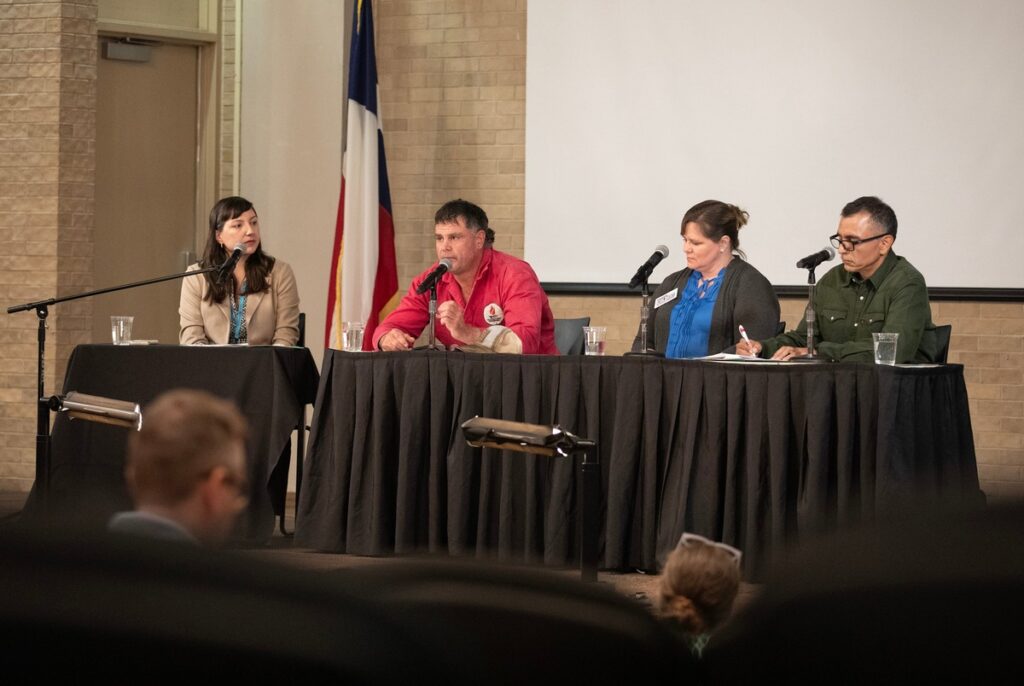
Incumbent Christi Craddick is touting the health of the Texas energy industry and its impact on the economy. Her top opponent says regulation on the commission is too lax.
Battleground state’s Democrat gov repeatedly dodges when pressed for policy difference between Harris, Biden
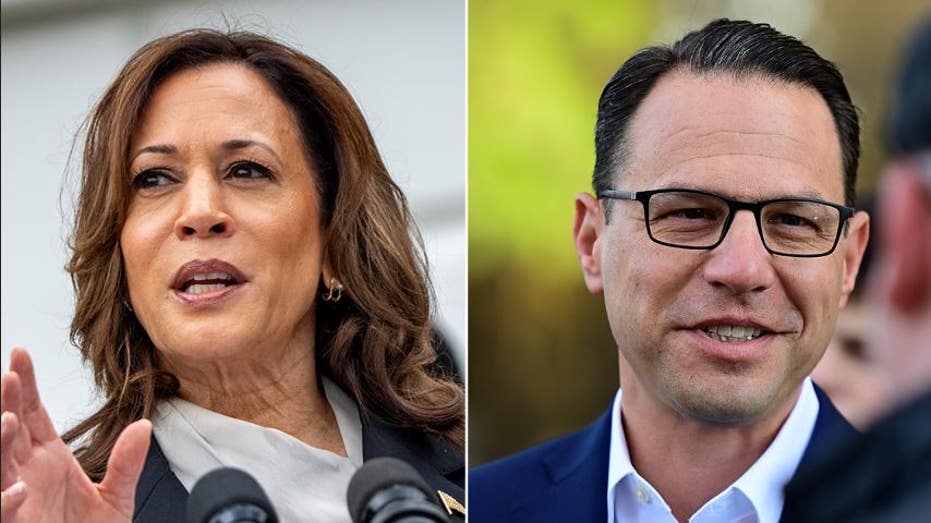
Democratic Pennsylvania Governor Josh Shapiro had no answer when asked to list one policy difference between President Biden and presidential candidate Vice President Harris during Sunday’s “Meet the Press” on NBC. “Our latest NBC News poll shows that more voters are concerned that Vice President Harris will continue Joe Biden’s approach than Donald Trump will continue his approach from his first term,” host Kristen Welker pointed out to Shapiro before asking if Harris has “done enough to distance herself from President Biden?” “You know, Kristen, I think what is clear is this is a race not between Kamala Harris and Joe Biden, but between Kamala Harris and Donald Trump. And on that, there are clear contrasts,” Shapiro said, while going on to discuss some of the differences between the presidential candidates, rather than between Harris and Biden. “I understand what you’re saying, Governor, but polls do show that more Americans feel as though President Biden’s policies have hurt them rather than help them,” Welker responded, before asking, “So can you name one key policy difference between Vice President Harris and President Biden? How would her administration look different?” KAMALA HARRIS DOWNPLAYS DIMINISHING SUPPORT FROM MALE VOTERS: ‘IT’S NOT THE EXPERIENCE I’M HAVING’ “You know, I’ve been really encouraged by the amount of energy that Kamala Harris, Vice President Harris, has put into focusing on how she will cut taxes for small businesses, the focus on child care, tax credit expansion,” Shapiro said. “Can you name one policy difference?” Welker pressed again. “Well, listen again, the contrast I am focused on, Kristen, is between her and Donald Trump,” he said. “And on that, I think it is clearly different.” DAVID MARCUS: SORRY KAMALA, VOTERS AREN’T BUYING YOUR TRUMP HAIL MARY The exchange was brought up later in the show, by guest Brenden Buck, who is a former adviser to House speakers Paul Ryan and John Boehner. “It was remarkable that Josh Shapiro was here as a surrogate for the campaign, and they still can’t think of an answer to what she would do differently than the president,” Buck said during a roundtable discussion. Shapiro will continue to campaign for Harris, he said during the show. “We are used to close elections here in Pennsylvania,” he said. “We understand that this election likely will come down to tens of thousands of votes.”
‘Want to put culprits on no-fly list’: Aviation Minister on amending safety rules amid hoax calls

In response to the recent threats, security measures at airports across India have been increased
‘Kashmir Pakistan nahi banega’: Former J-K CM Farooq Adbullah’s warning after Ganderbal terror attack
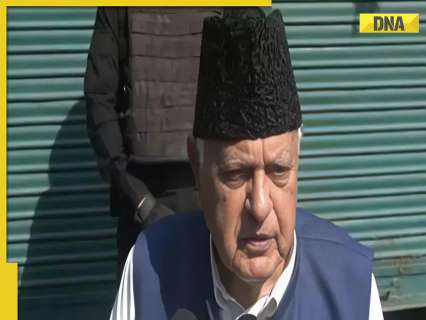
Speaking to reporters, former CM of Jammu & Kashmir Farooq Abdullah said, “Let us live with dignity and succeed… If they couldn’t create a Pakistan for 75 years, how would it be possible now?
‘Tragic and shocking’: Explosive House report details ‘preventable’ July 13 Trump rally shooting
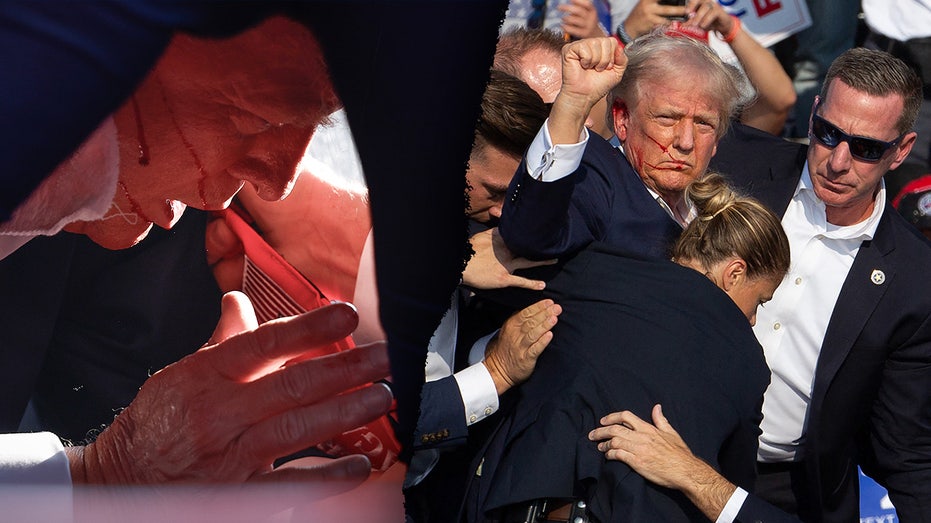
The deadly shooting at former President Trump’s rally in Pennsylvania on July 13 was a “preventable” incident stemming from a lack of proper planning and communication between law enforcement agencies, according to a new report. The House Task Force investigating the attempts on Trump’s life is releasing their interim findings on Monday, with a final report expected by Dec. 13. “Although the findings in this report are preliminary, the information obtained during the first phase of the Task Force’s investigation clearly shows a lack of planning and coordination between the Secret Service and its law enforcement partners before the rally,” the report said. U.S. Secret Service (USSS) personnel at the event “did not give clear guidance” to state and local authorities about how to manage security outside of their hard perimeter, nor was there a central meeting between USSS and the law enforcement agencies supporting them the morning of the rally – two findings presented as key failures in the 51-page report. WATCH DONALD TRUMP’S INTERVIEW ON ‘FOX AND FRIENDS’ “Put simply, the evidence obtained by the Task Force to date shows the tragic and shocking events of July 13 were preventable and should not have happened,” the report said. A would-be assassin’s bullet clipped Trump, Republicans’ 2024 nominee, in the ear while he was addressing supporters at a rally in Butler, Pennsylvania, over the summer. Thomas Matthew Crooks, 20, opened fire on the rally from a rooftop just outside the event’s security perimeter, killing one attendee and injuring two others in addition to Trump. The Monday report underscores the mountain of scrutiny that USSS has grappled with since the shooting, with lawmakers on both sides questioning how Crooks was able to fire eight shots before being killed by a single bullet to the head. CHECK OUT THE LATEST FOX NEWS POWER RANKINGS IN THE 2024 ELECTION The task force found that Crooks “had been under scrutiny by the Secret Service’s state and local partners” for roughly 40 minutes before “information about a suspicious person” reached the USSS command post. It said three local law enforcement officers noticed Crooks around 5 p.m. ET, each “independently” deducing his “behavior and manner were suspicious.” Back-and-forth ensued among local and state units, with communication made more difficult by a lack of a central command system with USSS. The report later said that from around 5:38 p.m. to 5:51 p.m., “a series of calls and messages about Crooks’s description and movements reached the Secret Service.” The document also referenced prior testimony by a witness from the Butler Township Police Department whose colleague spotted Crooks on the roof just before he opened fire. That witness said their colleague fell from the roof – which he was tenuously gripping – while shouting “THERE’S AN AR! AN AR! AN AR! A GUY WITH AN AR!” “To date, the Task Force has not received any evidence to suggest that message reached the former President’s USSS detail prior to shots fired,” the report said. TRUMP HAS ‘PRESIDENTIAL LEVEL’ SECRET SERVICE PROTECTION, LAWMAKERS TOLD The report also quoted a witness from the Butler County Emergency Services United (ESU) whose account of shooting Crooks appears to undercut the USSS’s assertion that one of its snipers killed the gunman. “He fired a single shot from a standing position at Crooks, who was in a prone position on the roof. Butler ESU Witness 5 told the Task Force that he believes his shot hit Crooks,” the report said. Crooks’ autopsy suggests he was only hit by a single bullet which proved fatal, the report noted. Former USSS Director Kimberly Cheatle previously said a USSS counter-sniper killed Crooks, and the report said “there is no evidence to date to the contrary.” “The autopsy found no evidence of an entry wound from a second bullet,” the report said. His bloodwork was also “positive for antimony, selenium, and lead,” with the latter element potentially coming from Crooks’ time spent at a firing range, according to the report. The report also points to logistical issues – particularly on the part of USSS – in the hours before the rally took place. For instance, there were two command centers set up for the event, with a witness testifying that no one from the Butler Police Department was invited to the USSS’ hub. Butler ESU Commander Edward Lenz also told Task Force staff that a sniper from his unit advised a USSS agent to pick up a radio communication device from their command center to be able to keep in contact with local and state authorities – but the agent never retrieved it. TRUMP ASSASSINATION ATTEMPT IN FLORIDA: SECRET SERVICE ‘REDLINES,’ PENNSYLVANIA TASK FORCE SAYS The report said ESU snipers, who were not positioned to monitor the building Crooks fired from but were inside the complex, were also not informed of any plan to keep an eye on the facility itself. “Local law enforcement told the Task Force that the Secret Service did not give any guidance to Butler ESU and Beaver ESU regarding the placement, role, and responsibilities of their snipers… they understood their assignment to be overwatch of the rally venue,” the report said. Local and state law enforcement held two briefings on the morning of the rally, but USSS “did not participate in either briefing,” the report said. USSS held its own briefing at 10 a.m. that day, but the report suggested local units were not invited. Indeed, one Pennsylvania State police officer “was invited to the 1000 USSS briefing by one USSS agent, then subsequently asked to leave by another.” In the conclusion of its report, the Task Force indicated it would continue its efforts to interview officials and review new details as they emerge, and reaffirmed its goal to investigate both the July 13 incident and the Sept. 15 assassination attempt against Trump at his West Palm Beach Golf Course. The Task Force was commissioned by House leaders after a unanimous vote in the chamber.
Early In-person voting begins for Alaska, Arkansas, Connecticut, Idaho, North Dakota, South Carolina, Texas
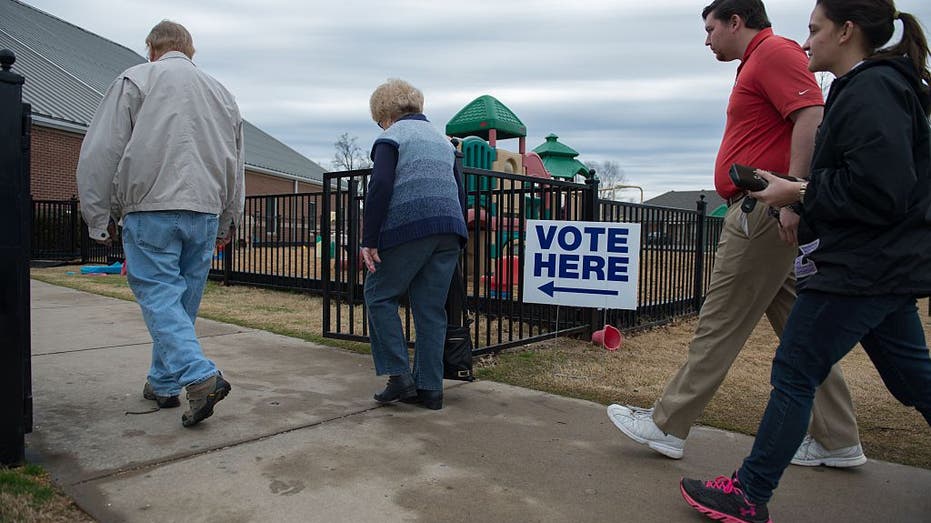
Early in-person voting begins in Alaska, Arkansas, Connecticut, Idaho, North Dakota, South Carolina and Texas on Monday. Here what you need to know about the state-of-play in these states and how to cast your ballot in each ahead of Election Day. Voting also begins today in several battleground House districts. For a full list of competitive races, see the latest Senate and House rankings. This is a guide to registration and early voting. For comprehensive and up-to-date information on voter eligibility, processes and deadlines, please go to Vote.gov and the election website for Alaska. Alaska began absentee voting earlier this month. Residents do not need to provide an excuse to receive a ballot. State officials must receive a ballot request by Oct. 26, and that ballot must be delivered to state officials by Nov. 5. HERITAGE FOUNDATION SUES DHS FOR DOCUMENTS THAT SAY ‘HARRIS’ AND ‘BORDER CZAR’ Alaska offers early in-person voting beginning Monday, Oct. 21, and it continues through Nov. 4. Alaska residents can register to vote in person on Election Day. The deadline for online or mail registration was Oct. 6. This is a guide to registration and early voting. For comprehensive and up-to-date information on voter eligibility, processes, and deadlines, please go to Vote.gov and the election website for Arkansas. Arkansas began absentee voting earlier this month. State officials must receive a ballot application by Oct. 29, and that ballot must be delivered to county officials by Nov. 5. Residents can vote early beginning Monday, Oct. 21, and it will continue through Nov. 4. Oct. 7 is the deadline for Arkansans to register to vote, both by mail or in-person at a local election office. This is a guide to registration and early voting. For comprehensive and up-to-date information on voter eligibility, processes and deadlines, please go to Vote.gov and the election website for Connecticut. Connecticut began absentee voting earlier this month. Applicants need to provide an excuse to receive a ballot. The resident must request a ballot application by Nov. 4, and that ballot must be delivered to county officials by Nov. 5. Connecticut began early in-person voting on Monday, Oct. 21, and it will continue through Nov. 3. FOX NEWS POWER RANKINGS: HARRIS LOSES HER LEAD AND A NEW ELECTORATE EMERGES Connecticut residents can register to vote online or by mail through Oct. 18. They can register in person at any time during early voting (Oct. 21 through Nov. 3) as well as on Election Day. This is a guide to registration and early voting. For comprehensive and up-to-date information on voter eligibility, processes and deadlines, please go to Vote.gov and the election website for Idaho. Idaho began in late September. Applicants do not need to provide an excuse to receive a ballot. The state must receive a ballot application by Oct. 25, and that ballot must be delivered to state officials by Nov. 5. Early in-person voting begins Monday, Oct. 21, for some locations, but varies for others. Check the Idaho county elections’ website to confirm your location’s start date.Early in-person voting will continue through Nov. 1. Idaho allows residents to register to vote in person during early voting (which ends Nov. 1) or on Election Day. Online voter registration ended Oct. 11. NEVADA SENATE HOPEFULS TACKLE TRANS ATHLETES, IMMIGRATION AND UFOS IN ONLY DEBATE This is a guide to registration and early voting. For comprehensive and up-to-date information on voter eligibility, processes and deadlines, please go to Vote.gov and the election website for North Dakota. North Dakota applicants do not need to provide an excuse to receive a ballot. The state must receive a ballot application by Nov. 4, and that ballot must be delivered to state officials by the end of the same day, Nov. 4. Some North Dakota counties began early in-person voting on Monday, Oct. 21. Others start later or do not offer early voting at all. Check the state’s website for more information. All eligible citizens can vote in North Dakota elections without prior registration. This is a guide to registration and early voting. For comprehensive and up-to-date information on voter eligibility, processes and deadlines, please go to Vote.gov and the election website for South Carolina. South Carolina began absentee voting in early October. Applicants need to provide an excuse to receive a ballot. The state must receive a ballot application by Oct. 25, and that ballot must be delivered to state officials by Nov. 5. PRO-DEFUND POLICE DEM IN KEY RACE ONCE THREATENED TO ‘KILL’ AND ‘BURY’ MAN OVER THE PHONE: POLICE RECORDS South Carolina will began early in-person voting on Monday, Oct. 21, and it will run through Nov. 2. South Carolina residents can register to vote online, in-person and by mail by Oct. 14. This is a guide to registration and early voting. For comprehensive and up-to-date information on voter eligibility, processes and deadlines, please go to Vote.gov and the election website for Texas. Texas began absentee voting in early October. Applicants will need to provide an excuse to receive a ballot. The state must receive a ballot application by Oct. 25, and that ballot must be delivered to state officials by Nov. 5. Texas began early in-person voting on Monday, Oct. 21, and it will run through Nov. 1. Texas residents must have registered to vote prior to Oct. 7. Get the latest updates from the 2024 campaign trail, exclusive interviews and more at our Fox News Digital election hub.
Senate shakeup: How a secret ballot could undermine a potential Trump endorsement in race to the top
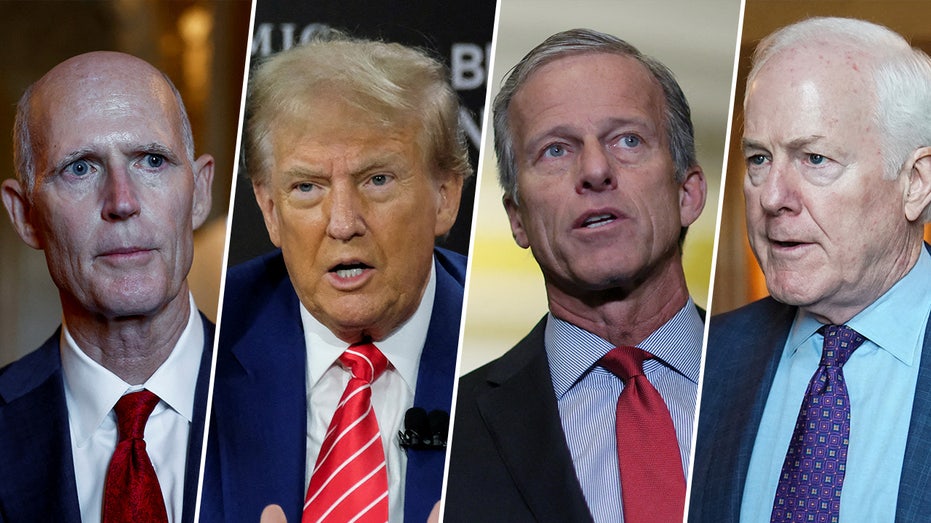
Former President Donald Trump’s historically influential endorsement could prove unconvincing in the Republican Senate leader race — if he chooses to offer one at all. Senate Republicans, including those who will be newly elected, will gather in Washington, D.C., shortly after the election in mid-November to hold a secret ballot to determine the next GOP leader. The next leader will succeed Senate Minority Leader Mitch McConnell, R-Ky., who is the longest-serving party leader in Senate history. HARD-LINE GOP EFFORT TO DECENTRALIZE SENATE LEADER AUTHORITY DASHED BY MCCONNELL ALLY Senate Minority Whip John Thune, R-S.D., and Sens. John Cornyn, R-Texas, and Rick Scott, R-Fla., have announced campaigns for the role. Each of the men endorsed Trump during the Republican primary, despite Thune having first backed fellow Sen. Tim Scott, R-S.C. Thune has had a particularly strained past with Trump over the last several years but has been communicating with him in recent months and seemingly repairing their relationship as he looks to lead the conference. Trump has often wielded his seal of approval, or disapproval, as a weapon. In the past, the former president has quickly doomed primary and general campaigns for elected office and leadership bids with as much as a Truth Social post. He’s also held grudges against politicians who endorsed opponents, such as Rep. Bob Good, R-Va. Good endorsed Gov. Ron DeSantis, R-Fla., in the GOP presidential primary in 2024 before ultimately backing Trump. The former president then endorsed Good’s primary opponent, who went on to beat him in a tight election. JUDGE ORDERS MORE JACK SMITH TRUMP INVESTIGATION DOCS TO BE MADE PUBLIC AHEAD OF ELECTION Trump’s ability to influence Republicans to get behind his chosen candidates has often relied on fear of retribution, a former Republican leadership aide explained. But when Republicans in the upper chamber cast their ballots for a new leader, they’ll be doing it secretly. “Nobody knows how any particular senator voted,” the former aide said. “So they’re free to say whatever they want in terms of who they voted for.” “I don’t think it has anywhere near the impact that it would in a public race.” The aide pointed to the speaker election in the House of Representatives, in which Trump’s support or lack thereof played a significant role. In the lower chamber, the vote is public on the House floor, and how each representative voted is recorded. ‘DESPICABLE HUMAN BEING’: MCCONNELL’S 2020 THOUGHTS ON ‘SLEAZEBALL’ TRUMP REVEALED IN NEW BOOK Trump also runs the risk of irritating Republicans in the Senate, who “would not appreciate being told who to support from anyone outside the chamber,” said Republican strategist Ron Bonjean, a former top spokesperson to former Senate Majority Leader Trent Lott and former chief of staff of the Senate Republican Conference. Any such endorsement could also prove moot if Trump doesn’t win the presidential election, which will be held roughly a week prior to the leadership vote. “We may not know the outcome of the November election for who controls the White House until after the race is over,” Bonjean pointed out. HARRIS BARNSTORMS WISCONSIN IN ONE-DAY SWING STATE TOUR TARGETING YOUNG VOTERS Only two GOP senators have publicly endorsed a leader candidate, with Sens. Markwayne Mullin, R-Okla., and Mike Rounds, R-S.D., both backing Thune early on. Mullin is a close ally of the former president and speaks with him frequently. When Trump has asked for Mullin’s opinion about the leadership race and whether he should get involved, the Oklahoma senator has ultimately deferred to the former president’s judgment, but reccommended that he not make an endorsement, as there may not be any benefit for him. For Trump, choosing to weigh in could introduce “the non-trivial risk that he endorses somebody, and they don’t win,” the former aide said. This would amount to an “out-of-the-gate rebuke from Senate Republicans.” If such an “immediate rebuke” were to take place, Trump would not have either the luxury or the capability to exact any kind of retribution, due to the vote’s secret nature, they added. “This is a true vote of conscience. And votes of conscience like that are not super-amenable to endorsement pressure.” Trump’s campaign did not provide comment to Fox News Digital in time for publication when asked whether he would get involved.
DOJ deploys district elections officers to handle ‘threats and intimidation’
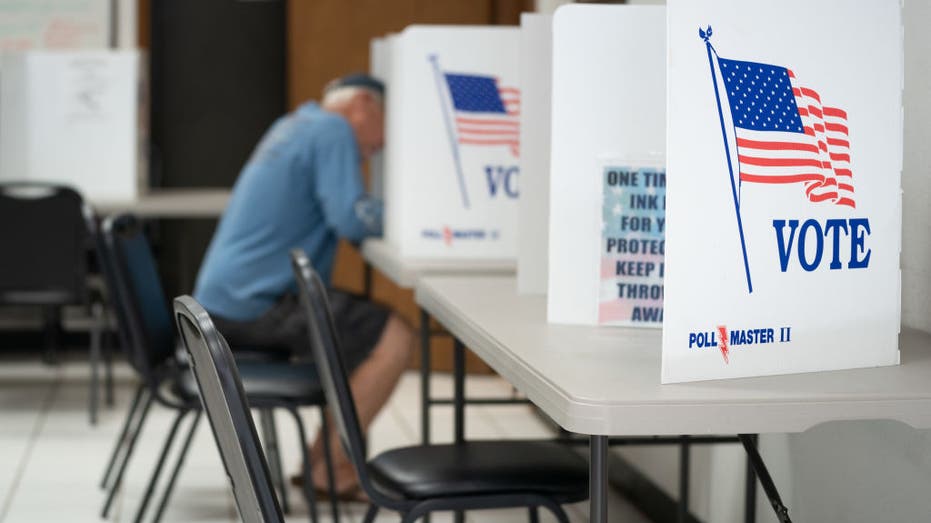
The Justice Department is deploying district elections officers across the nation ahead of Election Day to ensure poll workers can “do their jobs free from threats and intimidation.” The elections officers are expected to work in coordination with the Justice Department’s Election Threats Task Force, which was created in June 2021 by Attorney General Merrick Garland and Deputy Attorney General Lisa Monaco to address alleged violence against election workers. The task force, since its inception, has been engaging with the election community and state and local law enforcement to assess allegations and reports of threats against election workers, according to the Justice Department. The task force also partners with FBI field offices and U.S. Attorneys’ Offices throughout the U.S. This week, U.S. attorneys offices announced their district elections officers, which are selected each election cycle, to coordinate with the Elections Threats Task Force and federal, state and local law enforcement on Election Day. The coordination will ensure reports on the ground regarding any election-related complaints are coordinated with appropriate authorities, officials said. 3 MOST DANGEROUS TECH THREATS TO 2024 ELECTIONS The district elections officers are also responsible for overseeing their district’s handling of Election Day complaints about voting rights concerns, threats of violence to election officials or staff, and election fraud, officials said. “The Department will address these violations wherever they occur,” the Justice Department said in a statement. IRAN IS ‘INCREASINGLY AGGRESSIVE’ IN ITS OPERATIONS TO TARGET US PRESIDENTIAL CAMPAIGNS: INTEL COMMUNITY The DOJ added that its “longstanding Election Day Program furthers these goals and also seeks to ensure public confidence in the electoral process by providing local points of contact within the Department for the public to report possible federal election law violations.” Just last month, Garland convened a public meeting of the task force, saying there has been an “unprecedented spike in threats against the public servants who do administer our elections” since 2020. Since the task force was created, the DOJ has charged nearly two dozen individuals related to alleged threats to election workers. “These cases are a warning: if you threaten to harm or kill an election worker or official or volunteer, the Justice Department will find you,” Garland said last month. “And we will hold you accountable.” Just this year, the DOJ charged an individual for an alleged shooting spree targeting the homes of elected officials and a candidate for office; an individual for sending threatening communications to a Michigan election official; and more. Garland said the Justice Department will continue to build on its work ahead of the Nov. 5 Election Day by holding on-the-ground meetings with election workers across the nation. Garland also announced that ahead of Election Day, in early November, the FBI will host federal partners at FBI headquarters to address events, issues and potential crimes related to the elections. “Election officials and administrators do not need to navigate this threat environment alone,” Garland said. “We are here to support them and make sure they can safely carry out their critical work.”
Interviewing Donald Trump: A last-minute blitz and new closing message
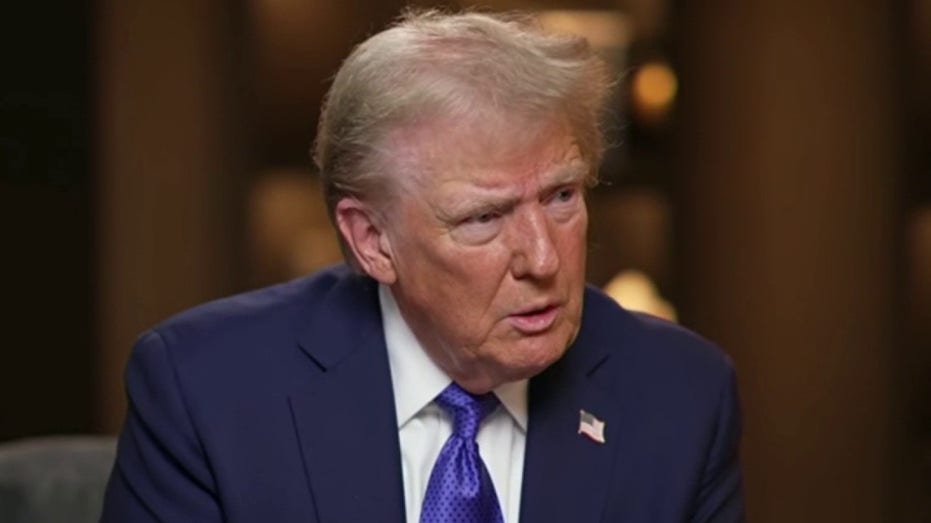
When I left Donald Trump after our interview, I was somewhat startled to pass eight men in full riot gear, marching toward his Trump Tower office. It was a stark reminder of the two assassination attempts. Trump was about to fly to Pennsylvania, and these guys were locked and loaded. I’d been told that he would use the old Reagan line that Saturday night: Are you better off now than you were four years ago? How long, I wondered, before he goes off script? BRET BAIER REVEALS TRUMP WAS OFFERED SAME INTERVIEW STYLE AS KAMALA HARRIS ON ‘SPECIAL REPORT’ Trump had told me he was going to Arnold Palmer’s hometown in the Keystone State. What I didn’t know was that he would describe the late golfer as “all man” and marvel at the supposed size of his male endowment. He also used the S-word to describe Kamala Harris. So much for sticking to the script. Critics, including the vice president, have been describing Trump as exhausted, based on one second-hand quote, but he didn’t look tired to me at all. If he was speaking in a softer voice, that’s because we were practically knee to knee in the tower’s library room. AS A CAUTIOUS KAMALA LOSES MOMENTUM, DEMOCRATS ARE PANICKING OVER A TRUMP WIN This was my second sitdown with the former president in a few months, and I pushed him on a wide range of topics. How could he call Jan. 6 a “day of love” when police were being attacked? Why, despite the “60 Minutes” editing fiasco on the Kamala interview, would you try to yank CBS’s license? How can you call your political opponents “the enemy within”? Would you engage in retribution? Will you admit the falsehood of “they’re eating the dogs, they’re eating the cats?” He dug in, even on that last one. Whether you like or dislike Trump, “‘Morning Joe’ producers and other producers that watch us and all the producers that watch us – this is not just rhetoric,” Steve Bannon said. “You cannot have a constitutional republic and allow what these deep-staters have done to the country.” Kash Patel says “we will go out and find the conspirators, not just in government but in the media… We’re going to come after you, whether it’s criminal or civilly,” but only based on the facts and the law. Now here’s the sense I’ve gotten from my reporting. With just over two weeks to go, Trump has settled on his closing message. It’s immigration and the economy. He may digress by cooking fries at McDonald’s, as a way of doubting Kamala’s teenage stint there, he may use more profanity, but the final appeal is based on those two issues, period. TRUMP DOUBLES DOWN ON CALLING JAN 6 A ‘DAY OF LOVE’ The Trump camp believes that one ad that has moved the numbers is Harris’ past embrace of taxpayer funding for federal inmates to get gender-reassignment surgery. That seemed questionable even to Charlamagne Tha God in their interview. Harris says she simply followed the law in the same way Trump did. The former president is trying to rebrand his effort by promising a New Golden Age. That seems a clear response to Harris touting a New Way Forward. Both are claiming the mantle of the “change” candidate with most voters seeing the country as on the wrong track–the incumbent vs. the former incumbent. Trump did get off a funny line with me about Kamala moving to the center. “She’s become MAGA. I’ll send her a hat.” SUBSCRIBE TO HOWIE’S MEDIA BUZZMETER PODCAST, A RIFF ON THE DAY’S HOTTEST STORIES But Trump and his strategists are mystified by what they see as the vice president’s lack of a closing message and failure to win over as many Black supporters as Joe Biden had. There’s an emphasis on abortion rights, of course, and loud warnings about Trump being unstable and unhinged. But is there anything that ties it all together? Trump has a longtime habit of asking everyone around him, including makeup artists, what they think, as a kind of focus group. “Are you confident?” he’s been asking lately. “Are you confident?” The answer he’s been hearing: Yes, but you’ll win narrowly.
Pro-Khalistan group linked to Delhi CRPF school blast? Here’s what we know so far
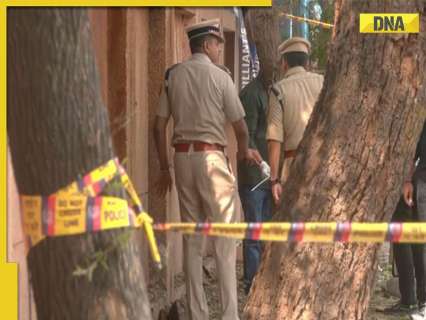
The police have reached out to Telegram, seeking information about a group that has claimed responsibility for the explosion in a social media post on the platform
